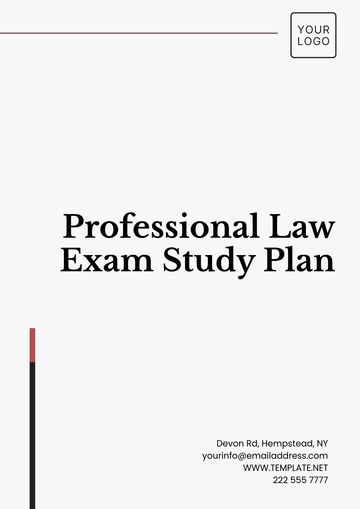Free Printable Art Subject Study Plan

Introduction
The study of art is an exploration of creativity, technique, and cultural understanding. This plan outlines a strategic approach to mastering the subject, focusing on developing skills in art history, practical art-making, and critical analysis. The objective is to provide a comprehensive understanding of art through structured schedules and goal-oriented learning paths.
Objectives
Develop a foundational knowledge of art history
Enhance practical art-making skills
Improve critical thinking and analysis of artworks
Gain exposure to various art movements and styles
Weekly Study Schedule
Day | Activities | Time Allocation |
|---|---|---|
Monday |
| 3 hours |
Tuesday |
| 2 hours |
Wednesday |
| 3 hours |
Thursday |
| 2 hours |
Friday |
| 3 hours |
Saturday |
| 4 hours |
Sunday |
| 2 hours |
Key Components of the Study Plan
1. Art History
Understanding the evolution of art over time is crucial for a comprehensive art study. Focus will be placed on significant periods including ancient, medieval, Renaissance, baroque, modern, and contemporary art. Utilize textbooks, online resources, and lectures to build a timeline of major movements and artists.
2. Practical Art-Making Skills
Developing hands-on skills is essential for any aspiring artist. This includes sessions in drawing, painting, sculpture, and digital art. Incorporate a variety of mediums and techniques to enhance versatility. Regular practice and experimentation are encouraged.
3. Critical Analysis and Reflection
Art is not only about creation but also about interpretation and critique. Engage in the critical analysis of works, understanding the context and meaning behind them. Writing reflections and participating in discussions will deepen understanding and improve communication skills.
4. Exposure to Different Art Styles
A well-rounded art education includes exposure to diverse styles and cultural perspectives. Attend exhibitions, explore different art forms such as photography and printmaking, and study the works of non-Western artists to broaden your outlook and appreciation for global art traditions.
Conclusion
This comprehensive study plan is designed to achieve a balanced and deep understanding of the art subject. By following this structured approach, students will gain both theoretical and practical knowledge, enriching their creativity and analytical abilities. Regular evaluation of progress and goal-setting will ensure continuous development and successful achievement of objectives.
- 100% Customizable, free editor
- Access 1 Million+ Templates, photo’s & graphics
- Download or share as a template
- Click and replace photos, graphics, text, backgrounds
- Resize, crop, AI write & more
- Access advanced editor
The Printable Art Subject Study Plan Template, offered by Template.net, is a customizable and downloadable tool designed to streamline your study sessions. This editable template allows you to tailor your art study plan to meet your unique needs. Fully printable, it ensures that you have a hard copy to refer to anytime. Plus, it’s easily editable in our AI Editor Tool for seamless personalization.





























